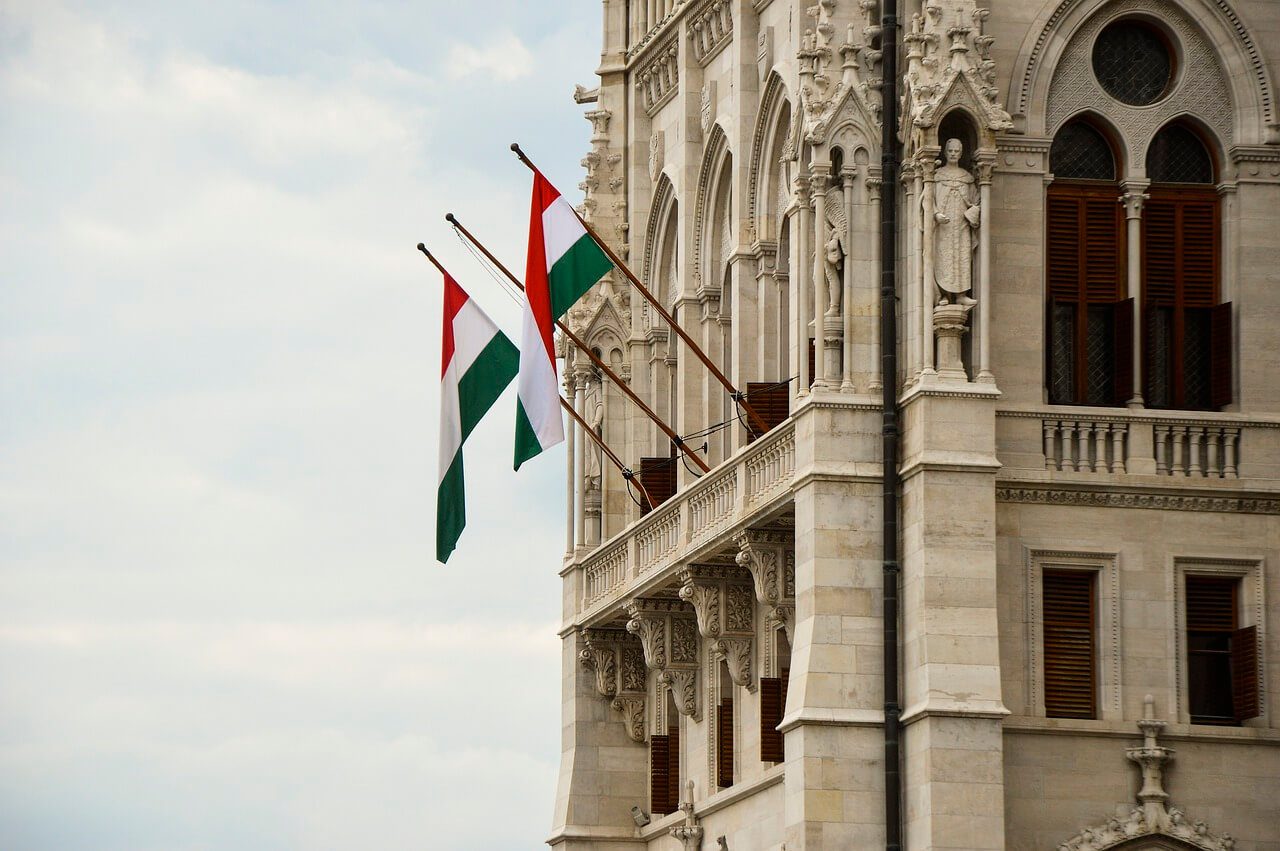As a researcher living in a semi-peripheral country, Hungary, I could not escape noticing that something was happening with “reproductive rights” globally, at least on the discursive level, when in the middle of this summer I received an invitation from a local students’ initiative to deliver a keynote speech at a Model UN session (an educational simulation event where participants play the role of UN delegates attempting to find solutions to real-world problems). They proposed a topic: “Reproductive Rights in Danger.” I found it astounding that the title was formulated as a warning, which might discourage deliberation. Beyond this, the phrasing of the title made me reflect on a number of issues; in light of my recent experiences, it appeared to be a symptom of an emerging international trend rather than a stylistic preference of Hungarian high-school students.
A Vague Term and the Contemporary Abortion Debate
To start with, there is the conceptual vagueness behind the key term “reproductive rights.” It can mean a number of things in different contexts. It is used for various advocacy purposes: to make a claim for access to affordable or free prenatal care, adequate and dignified maternity care, information about family planning, means of contraception, screening and cure of diseases affecting the reproductive organs, medically assisted reproduction, or abortion; and to assert the right to be free from forced marriage, child marriage, or commercial reproductive exploitation. A universally accepted definition of reproductive rights is missing, due not simply to the neglect of the international community, but to the lack of consensus on many aspects. To give an example: for some, the realization of reproductive rights includes that nobody’s reproductive capacity is commodified by society; for others, it means that everybody is entitled to pursue their individual desire to have a child by buying gametes or hiring a surrogate. Considering its conceptual vagueness and the lack of consensus behind it, we may even suspect that the term “reproductive rights” is sometimes used as a device of “calculated ambivalence” (a discursive strategy of political rhetoric)—or as a euphemism for “access to abortion.” According to a leftist critique, the neoliberal policies that fall under the umbrella term of reproductive rights are directed toward the sole objective of increasing individuals’ performance in the market economy; in this context, the discourse relating to abortion stresses individual choices, without considering whether or not the affected individuals, namely pregnant women, were provided real alternatives to abortion.
Getting back to the Model UN session organized by Hungarian high-school students, I was obviously invited to talk there about the issue of abortion, under the vague term of “reproductive rights,” on the occasion of a recent development in the US—in our globalized world, waves stirred up there are likely to reach shore on the other side of the ocean. As we know, on June 24, 2022, the United States Supreme Court issued a ruling related to abortion in Jackson v. Dobbs, overturning the almost 50-year-old ruling handed down on January 22, 1973, in Roe v. Wade. The significance of such a legal development may not be obvious to those living in a non-federal country, but in short, the Roe v. Wade ruling considered access to abortion as something that should be guaranteed by constitutional principles and introduced a trimester regime (meaning that specific rules may apply to different stages of pregnancy), while another ruling issued on the same day (Doe v. Bolton) set the precedent that a broad conceptualization of maternal health—including physical, emotional, psychological, familial, and age factors—should be considered in abortion regulations. According to critics, the latter ruling became the actual rule, leaving space for interpretations that would provide women throughout the US with access to abortion on demand virtually any time during the pregnancy. The recent Jackson v. Dobbs ruling overturned the previous interpretation regarding the constitutionality of abortion and returned the authority to regulate abortion access to individual U.S. states.
Over the decades, two basic positions have been articulated in the US around the issue of abortion. Using the debaters’ self-assigned terms, there are the “pro-choice” side (insisting on women’s right to abortion) and the “pro-life” side (insisting on unborn individuals’ right to life). The debate is manifested in huge social movements: on the one hand, the March for Life initiative has organized annual large-scale rallies in Washington, D.C., to protest the Roe v. Wade ruling since 1974; on the other hand, graphic media reports emerged about protests organized by the Women’s March initiative in May 2022, when a draft of the Supreme Court’s ruling in the Jackson v. Dobbs case was leaked.
Without aiming to relativize the essence of the abortion debate, which is eternal and normative in nature, I consider it necessary to contextualize the current U.S. debate when discussing the issue in Hungary, especially among young people, as the risk of getting trapped in a virtual echo chamber is especially high in a country where public moral debates have been largely absent from this field—as I will show below. As a first step of contextualization, I recommend taking a look at the Hungarian history of abortion regulation from the final stage of World War II to the present. Second, I suggest considering that the world, including the US, has changed in a number of relevant respects since the Roe v. Wade ruling.
A Retrospective Look at Decisive Moments and Considerations in Hungary
A brief overview of key moments in local history gives some sense of how the issue of abortion formed the lived reality of previous generations of Hungarians, whether directly or indirectly. Moreover, certain stakes and references in the current globalized debate, stirred by the overturning of Roe v. Wade, become more comprehensible by identifying the considerations that have shaped the local policy framework and legislation over time. Without attempting to perform a full mapping exercise, let me point out a number of resemblances (highlighted in italics).
I would first mention an event of collective trauma from the first months of 1945: during the siege of Budapest, Soviet soldiers committed rape against Hungarian women on a mass scale, which led the authorities to suspend the ban on abortions temporarily. (Note that it is a rather common feature of today’s abortion regulations that in cases of pregnancies resulting from crime, the general moral considerations are suspended.) Not much later, in the unfolding state-Socialist era, access to abortion was provided on non-restrictive terms, except for a period in 1952–1953 when a near-total ban on abortions was enforced. This initiative is associated with Ms. Anna Ratkó, Hungary’s first female minister, and with a slogan: “For an unwed woman, it’s a glory to give birth; for a married woman, it’s an obligation.” It sounds astounding, but we must not forget about the country’s population loss due to World War II, particularly among men of marriageable age. The political ambition to increase the birth rate was then translated into a negative financial incentive: in 1953–1956, a “tax on childlessness” was imposed on the incomes of women under 45 and men under 50 who had no offspring. Meanwhile, the regulation of abortion followed the tendency in the Soviet Union. (Note that in Hungary there are collective memories of a foreign empire that dictated the rules by which society was governed.) In this system, access to abortion was practically very wide. The rates were the highest in the 1960s and early 1970s, when abortions outnumbered live births. At a meeting of his party’s Political Council, Mr. János Kádár, the de facto leader of Hungary between 1956 and 1988, characterized the situation with dismay: “We have maternity centers with signs that say “Maternity Center,” but in reality, these are angel-making [a euphemism for abortion] factories run by the authorities.” He was apparently worried both about the possible health consequences of abortion (including increased risks of infertility and premature birth in the future) and about the moral implications, namely that abortion may be an act of “harmful selfishness that violates the interests of the society.” (Note that both of Kádár’s concerns appear in the pro-life discourse today.) In 1973, when information about a planned comprehensive population policy, motivated by demographic and economic concerns, was leaked, a grassroots opposition group launched a petition and collected signatures to oppose the government plan, which was believed to include a total ban on abortions. Eventually, the new population policy came into force; it featured positive incentives to encourage childbirth, such as improved maternity allowance, parental leave arrangements, and housing benefits for families. A new abortion regulation was also introduced, with access determined on the basis of “productivity”: by default, unwed and married women who had already given birth to at least three children were provided with access to abortion, while married women who were either childless or had only one or two children had access only in exceptional cases. During the last stage of state-Socialism, access to abortion was widened several times via decrees.
After the political change, in 1991, when Hungary’s new Constitutional Court was asked by petitioners to rule on the constitutionality of the decree governing abortion access, the Court found that there was no clear guidance in the text of the Constitution on the starting-point of life and that it therefore fell to Parliament to legislate on the issue of abortion. In this way, the Court avoided taking a stance on the core moral dilemma; but claimed the issue to be regulated not at the level of a governmental decree by those in power at a given time, but at the level of a parliamentary act by a democratically elected legislative body that represented the plurality of citizens. (Note that this solution by the Hungarian Constitution Court resembles the one employed by the U.S. Supreme Court in Jackson v. Dobbs: instead of deciding the issue on the basis of constitutional principles, both courts left the final decision to the political community.) The following year, the Parliament adopted the Act on the Protection of Fetal Life. This may sound like a strange title for an abortion regulation, but the Act’s preamble stresses that, by default, fetal life should be respected and protected; moreover, the act itself includes provisions for prenatal care. As for the breadth of access to abortion, this act took the same line as the decrees from the last stage of state-Socialism: abortion was made available during the first months of pregnancy in certain circumstances, including those cases where a woman was facing a “crisis situation.” In 1998, this provision was challenged at the Constitutional Court; eventually, the Court found that the definition of a “crisis situation”—“desperate mental, physical or social condition and this endangers the healthy development of the fetus”—was not adequate because, paradoxically, it referred to the interests of the fetus. The definition was eventually amended in 2000; it now reads: “a pregnant woman’s serious crisis situation […] is understood as [a situation] that causes physical or psychical impairments or social infeasibility.” This amendment of the definition clarified that the interests and perspectives of the woman, not those of the fetus, are to be considered in a decision about abortion. (Note that some contemporary pro-choice activists, in the US and elsewhere, claim to be advocating on behalf of voiceless fetuses who would allegedly choose to be aborted rather than to be born into a poor family, a community facing discrimination, a non-welcoming environment, or a disabled body.)
During the thirty years since the transition to democracy, robust social movements, like those in the US, have not evolved, yet there have been some citizens’ initiatives in Hungary relating to the issue of abortion (on both sides). These include a pro-life endeavor that gained high public visibility in 1998 when an NGO tried to intervene, by means of private law, in a case involving a 13-year-girl from the village of Dávod who had been impregnated by statutory rape: the NGO made a deposit for the benefit of the unborn child and managed to have assigned a legal guardian who argued that by this arrangement, a financial interest had been created on behalf of the fetus that would be realized only upon birth, as the sum of money would be waiting for the baby only if he/she made it to birth alive. (Note that questions relating to the legal personhood of fetuses are prominent in current abortion debates in the US as well.) However, an abortion was ultimately performed. In 2016, a pro-choice demonstration in Budapest led to a lengthy series of legal proceedings that culminated in a Constitutional Court decision in 2021 and ended with an apology: the participants in a street performance protesting against the planned restrictions on abortion access in Poland expressed regret for offending the religious sensitivity of Catholics by imitating Holy Communion with candies labeled as “abortion pills.”
We may add at this point that abortion regulations have not developed in the same way in Poland and Hungary, albeit that both countries are considered to have been defined by illiberal politics since the 2010s (from 2015 and 2010, respectively). In Poland, the government eventually enforced a constitutional court ruling that further restricted access to abortion (by removing the previous rule that fetuses with severe impairments could be aborted) in 2021. Meanwhile, in Hungary, nothing of such significance has happened in this field since the 2011 adoption of the country’s new constitution, which explicitly claims that “every human being shall have the right to life and human dignity” in the same sentence with the provision that “the life of the fetus shall be protected from the moment of conception,” an arrangement that concern Hungarian supporters of the pro-choice stand. Yet, some symbolic political steps have been taken by the Hungarian government, including its signing of an international pro-life declaration in 2020. On the policy level, two relevant developments may be mentioned: the abortion pill, which was available for a while in Hungary during the authorization process, was eventually not licensed in 2012; and from September 2022, by decree, women seeking an abortion must be presented with evidence of the fetus’ vital functions (in the form of cardiac activity or an ultrasound image).
Relevant Situational and Discursive Changes since Roe v. Wade
Having reviewed certain significant moments of Hungarian history, I recommend considering relevant respects in which the world, including the U.S.-led discourse, seems to have changed since the Roe v. Wade ruling relating to the issue of abortion.
First, I would suggest that developments in the field of science and technology should be taken into account. In the early 1970s, prenatal ultrasound scanning was not as prevalent as it is (at least in developed countries) today, not to mention that the image resolution capacity of these devices has improved a lot over the decades. Through visualization, the concept of intrauterine life has become more vivid, challenging the suggestion that the early stage of pregnancy involves just a “newly implanted clump of cells.” Moreover, the question of viability, understood as the point at which a baby can survive outside the womb, has always been at the center of abortion regulation disputes (including U.S. Supreme Court cases like Roe v. Wade and Planned Parenthood v. Casey), and advances in medical technology and treatment have made premature babies viable from an earlier point (at least in developed countries). Practically speaking, this means that in places where late-term abortions are available, a fetus of 24 weeks’ gestation may be administered a lethal heart injection in utero in order not to be pulled out alive, while in the same hour another fetus of the same gestational age may be delivered by emergency Cesarean section, with the medical staff of the neonatal intensive care unit making heroic efforts to save the premature baby’s life. To conceptualize this on the level of moral philosophy, choosing an abortion after the actual point of viability cannot be justified merely by referring to a woman’s right to stop her offspring from using her uterus, because a choice like this implies the position that the offspring’s life in itself, even outside the womb, is not desired. We may also mention here that the development of science in the field of medically assisted reproduction has set up new ethical challenges relating to the conceptualization of human life: just think about the real-life dilemma that hits some parents with an in vitro-conceived baby when they receive official notification from the IVF clinic asking them to decide whether the unused embryos created during fertility treatment—their child’s potential siblings—should be stored, discarded, donated for research, or donated to other individuals. And when it comes to the concern that restricted access to legal abortion will lead to an increase in maternal death resulting from illegal abortions, the current availability of the abortion pill (shippable even by mail) likely makes it an alternative to the infamous methods of “back alley” or self-induced abortion, like using a straightened wire coat hanger or a knitting needle. (The latter tools are still depicted on signs held at pro-choice demonstrations, although this symbolism is considered outdated by some activists.)
Second, I would highlight certain developments that are unmistakable even for someone who is following the U.S. public discourse from the outside: the change in political statements regarding abortion from the side that has been associated with the pro-choice stance. Not so long ago, in 2005, (then-Senator) Hillary Clinton acknowledged that abortion meant a “sad, even tragic choice to many, many women,” and in her 2008 campaign, she claimed that “Abortion should be safe, legal, and rare”—a slogan first introduced to Democrats’ political rhetoric by President Bill Clinton. That approach has shifted: in 2022, media images showed protests against the overturning of Roe v. Wade where the signs read: “Abortion on Demand and Without Apology.” In other words, where abortion used to be presented as a grim phenomenon to be reduced by prevention measures, it is now presented in the mainstream pro-choice discourse as a healthcare service that should be made as widely available as possible. This shift is reflected in some segments of popular-commercial culture. In 2017, a Teen Vogue magazine article advertised gift ideas for post-abortive teenage girls—presenting abortion as a normal coming-of-age experience (and an occasion to buy or expect gifts). In 2021, a crowdsourcing campaign was started to disseminate an illustrated children’s book, “What’s Abortion Anyway?”; its authors “believe in building a world for kids and adults where abortion is normalized as another outcome of pregnancy, just like miscarriage and birth.” The summer of 2022, around the time of the overturning of Roe v. Wade, witnessed a series of manifestations of this approach. In a magazine article entitled “What Mommy Does at Work,” an abortion provider shared how she explained abortion to her 4-year-old daughter and 2-year-old son. On a late-night TV show, the CEO of Planned Parenthood, the United States’ largest abortion provider, opined that “it’s, kind of, actually sexy when people support reproductive rights.” Cosmopolitan magazine featured glamorous celebrities supporting the pro-choice stance, one of whom shared the story of her recent abortion while on concert tour: “I went to Planned Parenthood, where they gave me the abortion pill. It was easy. Everyone deserves that kind of access.” Not only is the accessibility of abortion in the abstract celebrated, but the real-life decisions of individuals who choose to have an abortion—“so they can be a better parent,” for example—are also praised.
Conclusion: Diverging Conceptions of Human Dignity
Last but not least, I would suggest my audience think about the core concept of the human rights theory, namely human dignity, and the diverging approaches to it. Although there is an emerging tendency to prioritize a purely autonomy-based, individualistic understanding of dignity, the other dignity concept—which includes the element of relationality, meaning relatedness to each other—has deep roots in human rights thinking. We may not forget that the pro-life stance may be based on the latter understanding of dignity and can be argued from a secular human-rights perspective combined with different political positions, including the progressive one. If we look at the U.S. scene, there are pro-life activists who frame the cause in feminist terms, contending that “women deserve better than abortion” and that the issue of crisis pregnancy should be addressed by providing comprehensive support for mothers and their children—based on the principle that “every human being should live a life free from violence, from the womb to the tomb.” Indeed, there is a long tradition of pro-life feminism in the US. Moreover, the pro-life stance is articulated in major youth initiatives with slogans like “I am the pro-life generation” or “The future is anti-abortion” that attract both young women and men.
My conclusion would be that despite all the tendencies and changes in the world, including the human rights discourse, there is still no unanimous consensus among the global community that abortion access should be considered an uncontestable and unrestrictable human right—as evidenced by a September 2022 plenary meeting of the UN General Assembly during the debate on a draft resolution that included the phrase “safe abortion.” (Notably, Hungary was among the countries that did not take a pro-life stance on this non-binding document.) Turning back to the initial impetus of my reflections—the invitation from the student group—I claim that when it comes to a Model UN session, which should be an exercise in seeking agreement, the issue of abortion should be debated in the context of human rights instead of the overturning of Roe v. Wade being framed, in a one-sided way, as a cause for moral panic.







